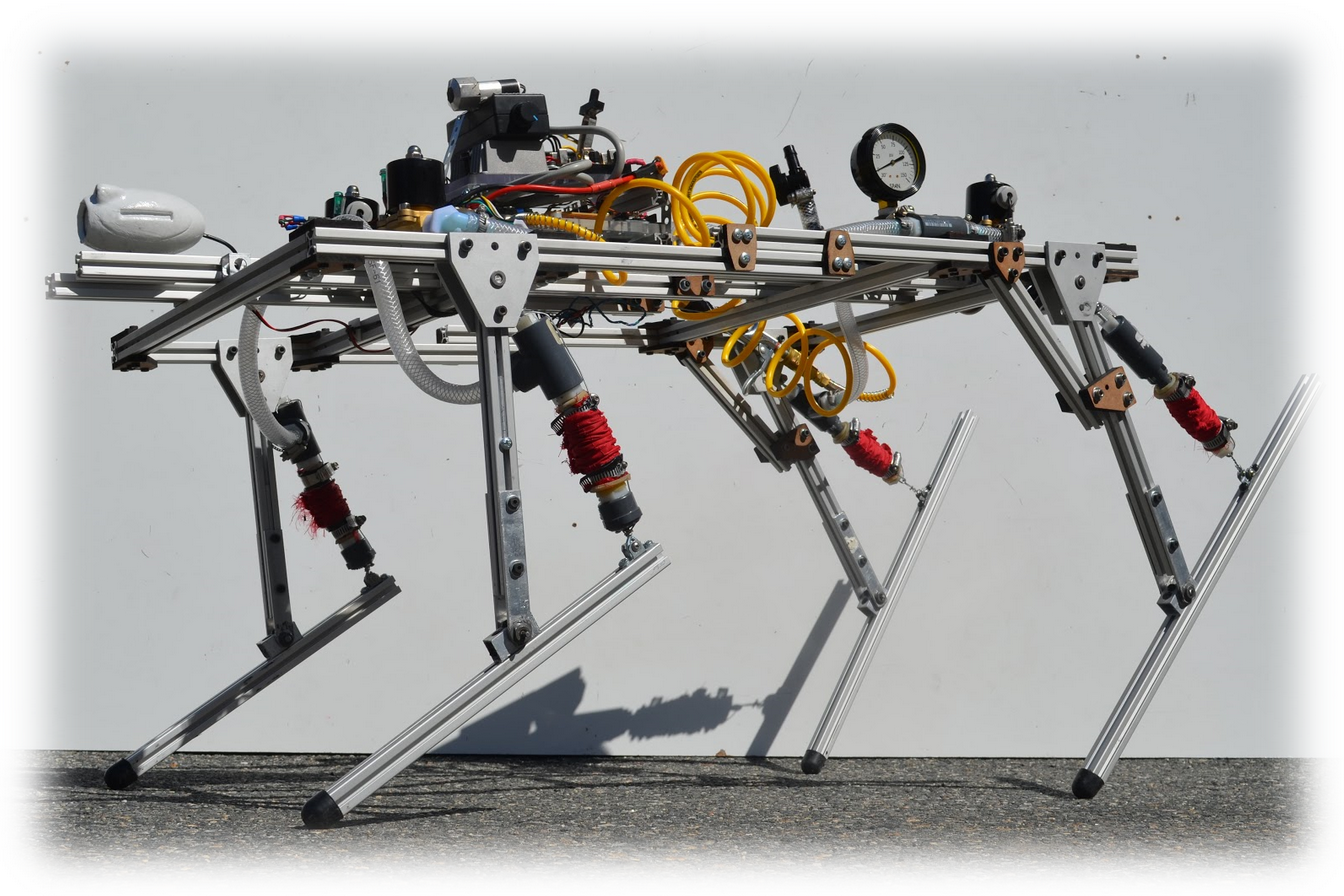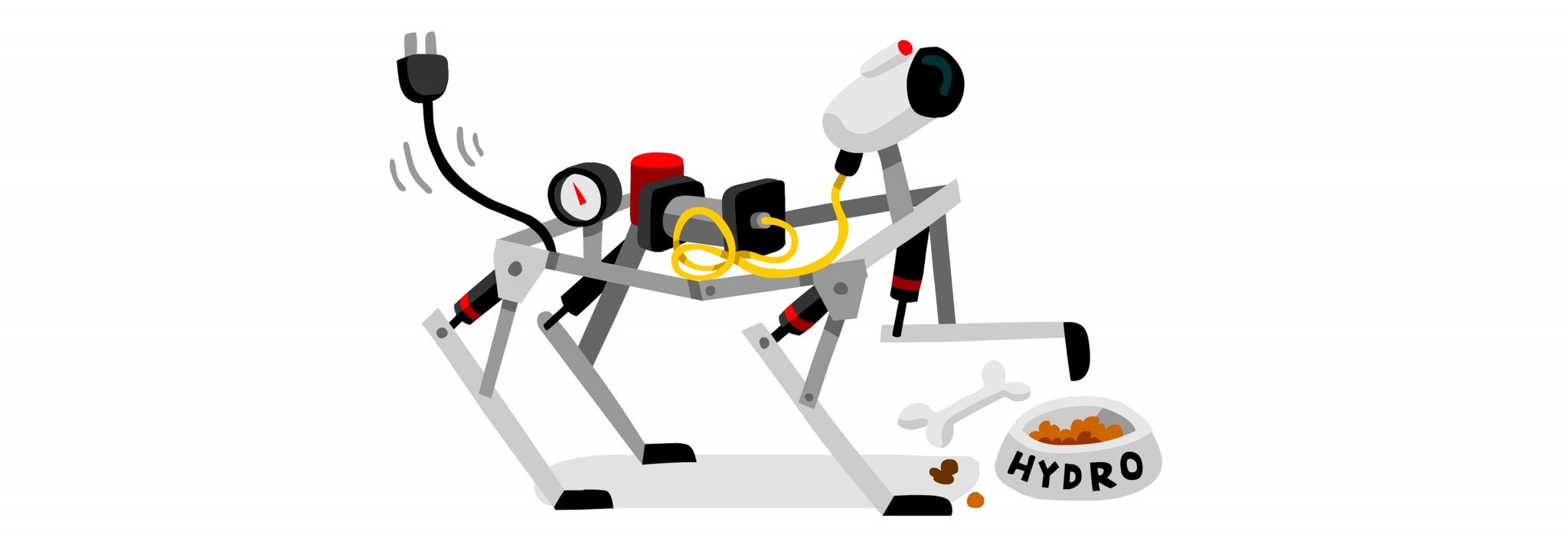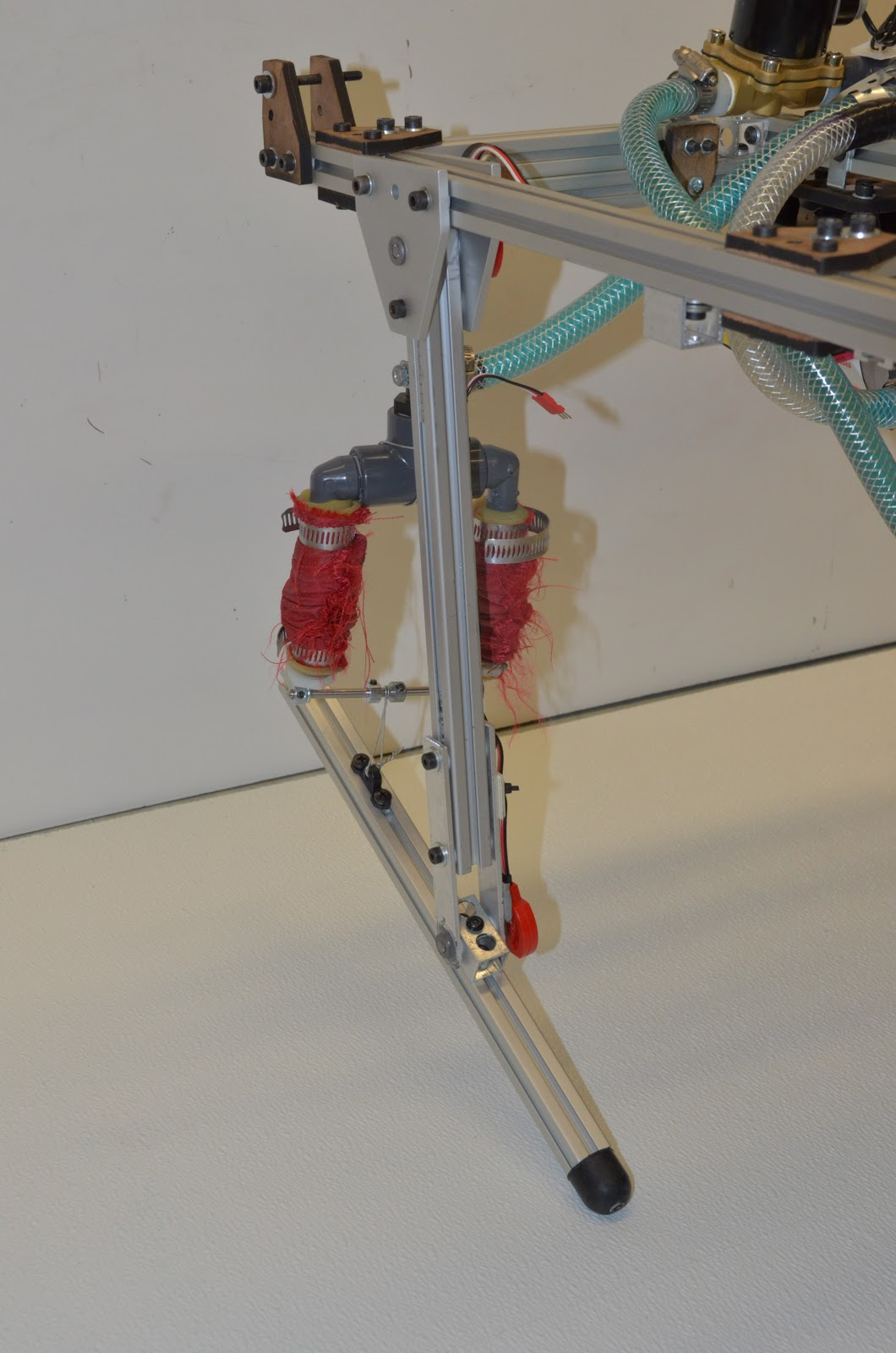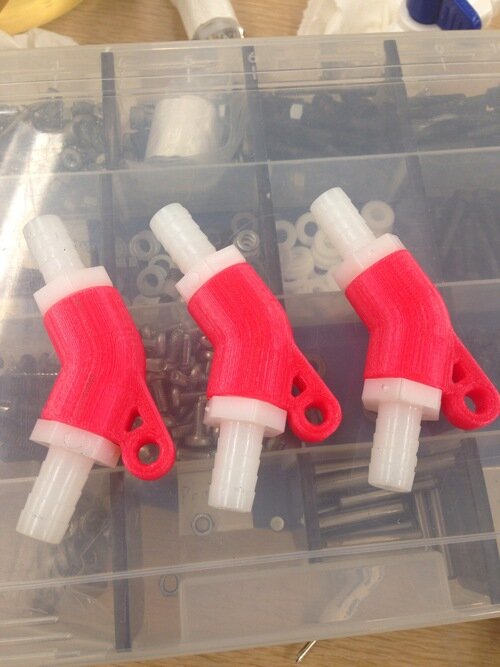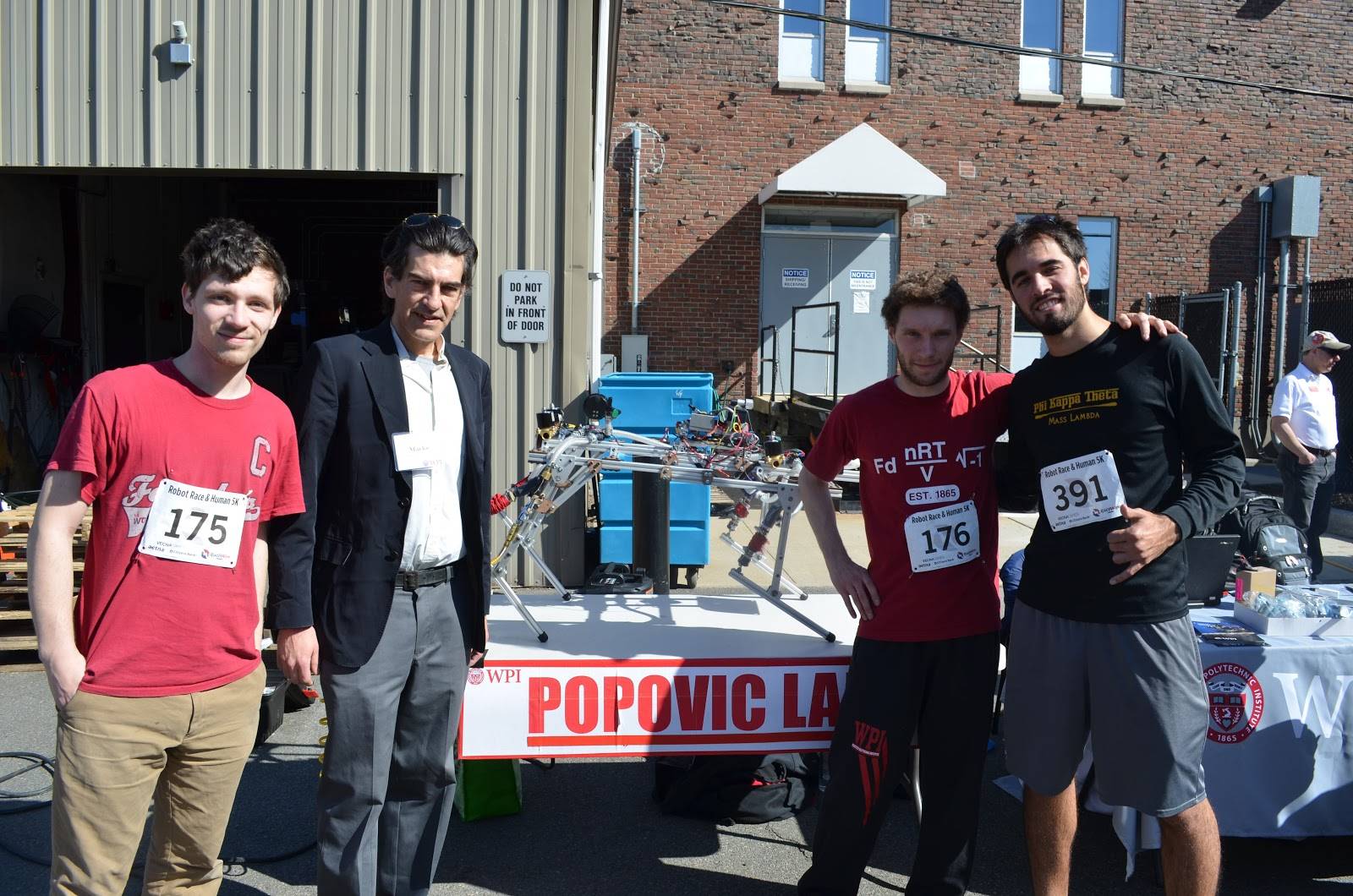Thane Hunt
For my Major-Qualifying-Project (MQP) at WPI, I, along with two other students constructed a highly modular, re-configurable skeleton made mostly with extruded aluminum bars. This extrusion allowed the team to completely reconfigure the geometry of the skeleton and experiment with the new characteristics in less than 5 minutes.
This skeletal platform is powered by a novel linear actuation system called "Hydro-muscles", which are latex tubes that exert forces using the principle of axial elongation under pressure due to radial constraint. This actuator is quite different from the more well-known McKibben muscle in that it is capable of power augmentation while still using an incompressible working fluid. This technology recently became the largest single intellectual property contract in the history of WPI as an institution. These muscles saw rigorous testing and validation while becoming integral components of many separate academic and research projects in Dr. Popovic’s lab, including this project..
A wide array of kinematic configurations where tested, with an equally wide spectrum of success. The most successful jump performed by the robot achieved a height of about 25 cm of ground clearance and 29 cm of forward motion.
In the end, the robot worked as planned, and became famous for being WPI's first quadruped robot capable of actual ambulatory motion on the ground, without support.
We were honored to be interviewed and have the story of our creation be told by the Boston Globe, Reuters, New York Times, and the WPI Alumni catalog.
Some links to these stories are at the bottom of this page.
